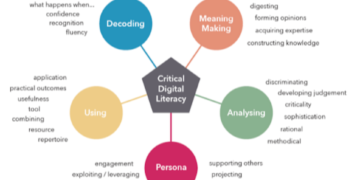Software Development in 2023
Introduction
Software development plays a pivotal role in the success of enterprises therefore Choosing the right custom software development company is crucial for organizations to streamline their processes and deliver high-quality products. In the following sections we will explore different software development approaches to evaluate key factors for approach selection, provide case studies, discuss the pros-cons and outline best practices to ensure a successful implementation.
Understanding Software Development Methods
Traditional Waterfall Model
The traditional waterfall model is a linear approach that allows you to gather & deploy all the requirements by following a serialized process. Each phase has specific deliverables, and progress moves forward only when the previous phase is complete. This approach offers a structured and well-documented process making it suitable for projects with stable requirements and predictable outcomes.
Quick and Easy Methodology
This methodology emphasizes flexibility, collaboration and constant development. It focuses on delivering value in a short cycle known as sprint empowering teams to respond quickly to changing requirements of customer needs and reduce development risks.
Development & Operations
It is a technical approach that promotes collaboration between Custom Software Development Company and IT operation teams. It aims to streamline the software development lifecycle enabling faster releases through automation, continuous integration and continuous delivery.
Examining Factors for Software Development Approach Selection
While selecting the optimal software development approach for your enterprise, several below-mentioned factors are to be considered.
Project Complexity
Evaluate complexity of your project, size, scope and technical intricacies. Traditional waterfall model is perfect for fulfilling requirements of simple projects. However, for complex projects that require flexibility and adaptability Agile or DevOps approaches are more suitable.
Time Contrast
Consider project’s time constraints and deadlines. These methodologies excel in time-sensitive projects due to their repetitive nature and continuous delivery capabilities. The traditional waterfall model may struggle to meet tight deadlines due to its linear progression.
Team Collaboration
Assess the level of collaboration required for your project. Agile and DevOps methodology supports close collaboration among team members, stakeholders and customers. They promote transparent communication leading your team towards higher and improved outcomes.
Scalability And Flexibility
Examine the scalability & flexibility requirements of your project. Agile and DevOps approaches offer scalability by breaking the project into smaller manageable parts. They are also adaptable to changing market dynamics and customer needs.
Risk Management
Evaluate the risk tolerance of your organization and project. Agile and DevOps methodologies emphasize risk mitigation through iterative development, continuous testing, and rapid feedback loops. This approach allows for early identification and resolution of potential issues.
Choosing the right software development company
Now that we have explored the various factors for approach selection let’s outline the steps to choose the optimal software development approach for your enterprise
Step 1: Asses your Project Requirements
Analyze your project requirements Thoroughly including the expected deliverables, timeline and budget. Define the success factors and prioritize them based on their importance.
Step 2: Analyze Your Organization’s Culture and Structure
Consider your organization’s structure and determine whether your team is open to change, collaboration, and development. Align the chosen approach with your organization’s capabilities.
Step 3: Consider Resource Availability
Evaluate the availability of skilled resources within your organization. Some approaches such as Agile and DevOps require specific skill sets therefore you can hire a cross-functional team from the best Custom Software Development Company to ensure that you have all the necessary resources to implement the chosen approach effectively.
Step 4: Evaluating Project Scope and Timeline
Assess the project’s complexity and size. Considering any time constraints associated with the project. Match the approach to the project’s characteristics to ensure successful execution.
Step 5: Identify Potential Risks
Identify potential risks by determining how each approach is associated with your project. Address all the risks and take steps accordingly to avoid any future unfavorable circumstances.
Case Studies: Successful Software Development Approaches in Enterprises
To gain further insights into successful software development approaches, let’s explore a few case studies
Case Study 1: Agile Approach for a Start-up
A start-up aiming for rapid product development and market entry opted for an Agile approach. By continuously engaging with their target audience they can achieve quick replication, valuable feedback, and adapt their product rapidly to market demands. This Agile approach allows them to gain a competitive advantage and establish a strong foothold in their industry.
Case Study 2: DevOps Implementation in a Large Enterprise
A large enterprise undergoing digital transformation implemented DevOps practices to enhance its software development and deployment processes by automating repetitive tasks such as ensuring continuous integration and delivery. Connect your team with the best software application development agency so they can attain high working efficiency. This partnership allows them to leverage enterprise software development best practices and stay at the center of technological advancements driving success in the competitive market.
Case Study 3: Hybrid Approach for Complex Projects
A company dealing with complex projects involving multiple stakeholders and diverse requirements adopts a hybrid approach. To combine elements of Agile, DevOps and traditional methodologies to create a balance between stability & flexibility. This hybrid approach allowed them to handle complexity effectively while delivering high-quality products on time.
Must Read: The Future Of Software Outsourcing
Pros and Cons of Different Software Development Approaches
Here are the pros and cons of different software development approaches.
Traditional Waterfall Model
Pros
- A well-defined and structured process
- Suitable for small projects with fixed requirements
- Clear milestones and deliverables
Cons
- Limited flexibility to accommodate changes
- High risk of late-stage errors and revisions
- Customer feedback integration only after the project complete
Agile Methodology
Pros
- Flexibility to adapt to changing requirements
- Customer-centric approach with continuous feedback
- Faster time-to-market and iterative development
Cons
- Requires active customer involvement throughout the process
- This may lead to scope creep without proper management
- Less predictable timelines and budgets
DevOps
Pros
- Improved collaboration between development and operations teams
- Continuous integration and delivery for faster releases
- Efficient handling of infrastructure and software changes
Cons
- Requires significant cultural and organizational changes
- Initial setup and automation may be time-consuming
- Increased emphasis on automated testing and monitoring
Conclusion
Selecting the optimal software development approach is a critical decision that can significantly impact an enterprise’s success. By carefully evaluating project requirements, considering organizational culture and understanding the benefits and limitations of different methodologies enterprises can make informed decisions. Agile, DevOps, and traditional waterfall models each offer unique advantages and the choice should align with project characteristics and business objectives. Remember, continuous evaluation and adaptation are essential for staying ahead in the dynamic world of software development.










































